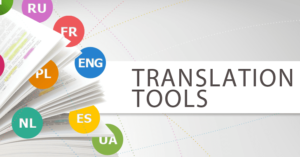Last week, we introduced the importance of “Conformity” to ensure translation quality. The first Best Practice in the Conformity is to Use the Right Tools. This means that we must debunk the myth that automatic translation tools such as Google Translate are a one-stop solution for translation issues. The reality is that automatic translation tools are imperfect, and require intervention by professional translators who have been trained in post-editing. You can read more about this in my blog post Myth #1.
 A better strategy is to find dictionaries, terminology databases and bilingual concordancers, that will help you to do a quality translation. The best tool I am aware of is www.Linguee.com which is available in over 20 languages. When you search a word or expression in this bilingual concordancer, you can see several different translations in various contexts and choose the best one for the document you are translating. Please avoid the “Deep L” function offered by Linguee, unless you have the post-editing skills needed to successfully work with it.
A better strategy is to find dictionaries, terminology databases and bilingual concordancers, that will help you to do a quality translation. The best tool I am aware of is www.Linguee.com which is available in over 20 languages. When you search a word or expression in this bilingual concordancer, you can see several different translations in various contexts and choose the best one for the document you are translating. Please avoid the “Deep L” function offered by Linguee, unless you have the post-editing skills needed to successfully work with it.
If Linguee is not available for your language combination, a (poor) substitute is Google Translate. I hesitate to even recommend this, for the reasons previously mentioned. Also, Google Translate only offers one translation of a word or phrase (out of context), immediately making it inferior to Linguee which gives several options in context. The main thing to remember is to search only words and expressions, not complete sentences. You need to learn to put sentences together themselves so that your translations sound natural.
The Microsoft Word Editor works with over 100 languages and can be used to check grammar, spelling, etc. — to ensure that your translation has Conformity with written language standards. Of course, this machine editor will not notice every mistake, so it is important to check your translation carefully. There may be better correction software available in the language you are using.
So on your next translation project, don’t give in to the temptation to take a shortcut by using automatic translation. Do the actual translation work yourself, using reliable tools, so that your translation is authentic and of good quality. Next week, we will talk about another best practice: Verify Your Verbs.
Have a great day!
Liane 🙂
